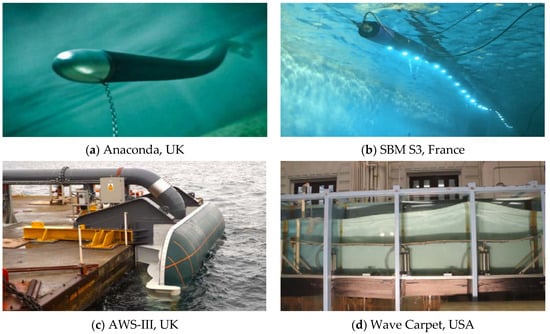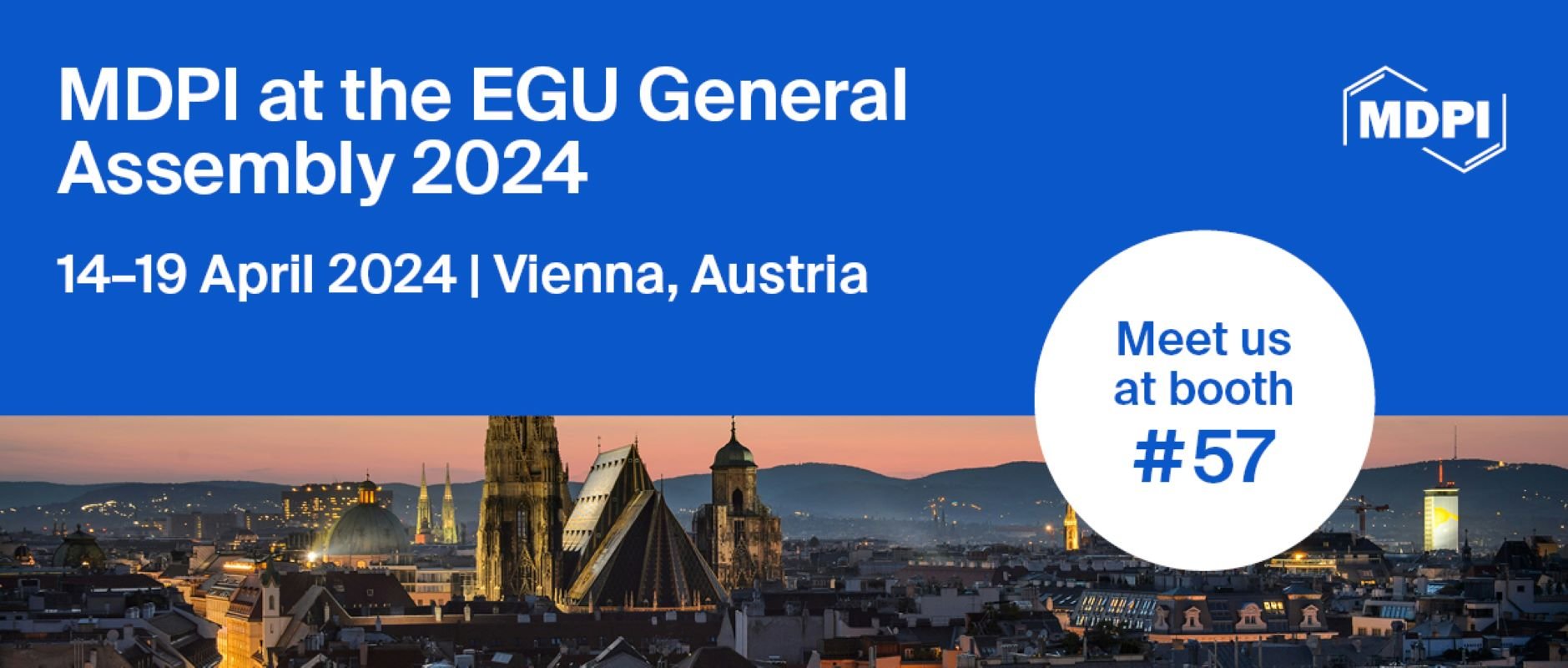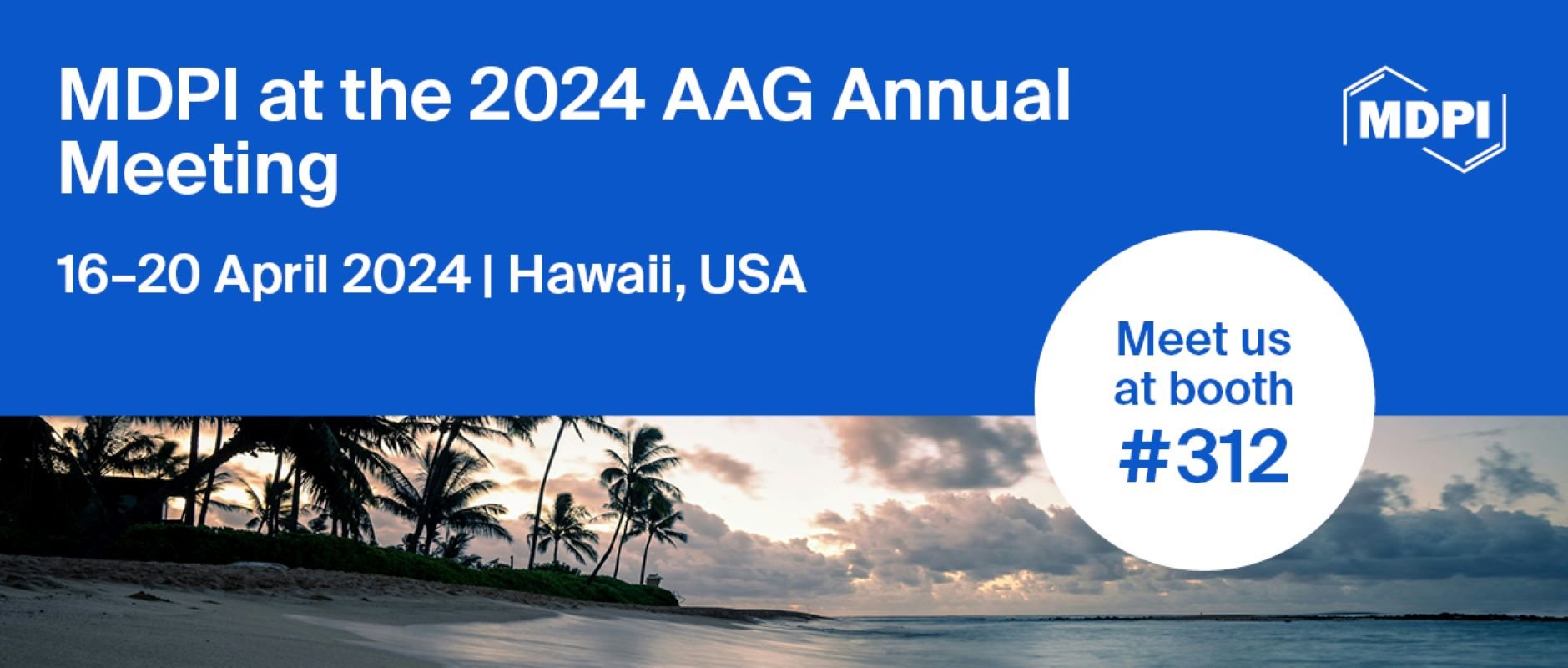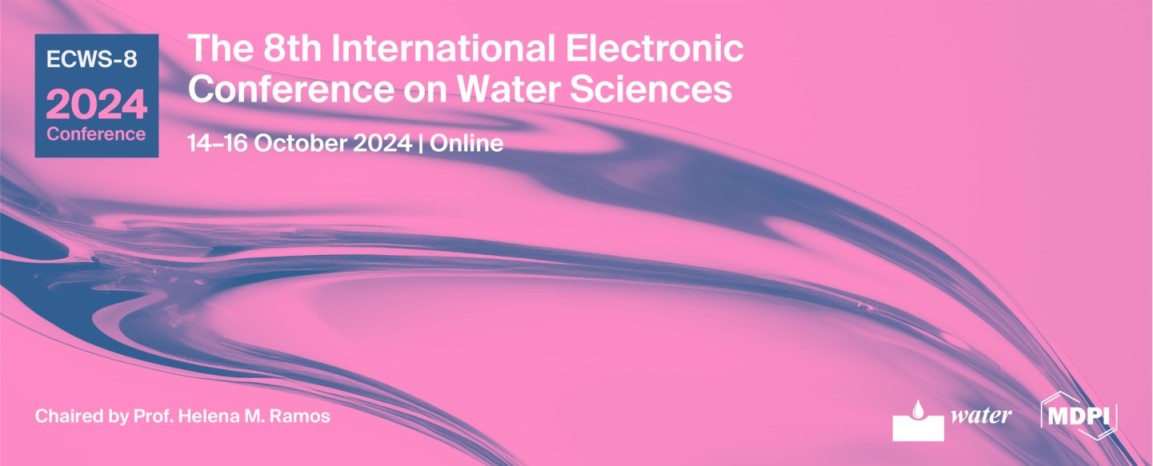Journal Description
Oceans
Oceans
is an international, peer-reviewed, open access journal of oceanography, published quarterly online by MDPI.
- Open Access— free for readers, with article processing charges (APC) paid by authors or their institutions.
- High Visibility: indexed within Scopus, ESCI (Web of Science), AGRIS, and other databases.
- Rapid Publication: manuscripts are peer-reviewed and a first decision is provided to authors approximately 45.2 days after submission; acceptance to publication is undertaken in 5.7 days (median values for papers published in this journal in the second half of 2023).
- Recognition of Reviewers: APC discount vouchers, optional signed peer review and reviewer names are published annually in the journal.
Latest Articles
Energy Efficiency Analysis of a Deformable Wave Energy Converter Using Fully Coupled Dynamic Simulations
Oceans 2024, 5(2), 227-243; https://doi.org/10.3390/oceans5020014 - 15 Apr 2024
Abstract
►
Show Figures
Deformable wave energy converters have significant potential for application as flexible material that can mitigate structural issues, while how to design the dimensions and choose an optimal deployment location remain unclear. In this paper, fully coupled computational fluid dynamics and computational solid mechanics
[...] Read more.
Deformable wave energy converters have significant potential for application as flexible material that can mitigate structural issues, while how to design the dimensions and choose an optimal deployment location remain unclear. In this paper, fully coupled computational fluid dynamics and computational solid mechanics were used to simulate the dynamic interactions between ocean waves and a deformable wave energy converter. The simulation results showed that the relative length to wave, deployment depth and aspect ratio of the device have significant effects on the energy conversion efficiency. By calculating the energy captured per unit width of the device, the energy efficiency was found to be up to 138%. The optimal energy conversion efficiencies were achieved when the structure length was 0.25, 0.5 or 0.75 of the dominating wavelength and submerged at a corresponding suitable depth. The aspect ratio and maximum stress inside the wave energy converter showed a nonlinear trend, with potential optimal points revealed. The simulation approach and results support the future design and optimisation of flexiable wave energy converters or other marine structures with notable deformations.
Full article
Open AccessArticle
Global Chlorophyll Concentration Distribution and Effects on Bottom Reflectance of Coral Reefs
by
Ana G. Bonelli, Paulina Martin, Phillip Noel and Gregory P. Asner
Oceans 2024, 5(2), 210-226; https://doi.org/10.3390/oceans5020013 - 10 Apr 2024
Abstract
Despite the limited coverage of coral reefs in the world’s oceans, they play a crucial role in global marine biodiversity and providing essential ecosystem services. This study explores the influence of chlorophyll-a (Chl-a) concentration in the water column on the estimation
[...] Read more.
Despite the limited coverage of coral reefs in the world’s oceans, they play a crucial role in global marine biodiversity and providing essential ecosystem services. This study explores the influence of chlorophyll-a (Chl-a) concentration in the water column on the estimation of bottom reflectance (rb) in coral reefs monitored by the Allen Coral Atlas coral reef monitoring system, using satellite imagery from a Sentinel-2 MSI sensor. We conducted a comprehensive analysis, considering Chl-a global distribution and variability, and its combined effect with water column depth over rb calculation. Our results demonstrated that the impact of Chl-a on rb estimation becomes significant when the water column depth exceeds 3 m. While suggesting the optionality of using regional Chl-a values, our study highlights potential overestimations of Chl-a in optically complex environments, such as along the Brazilian coast. This research contributes to refining coral reef monitoring systems and underscores the importance of accurate Chl-a assessments for robust environmental evaluations.
Full article
(This article belongs to the Topic Aquatic Environment Research for Sustainable Development)
►▼
Show Figures
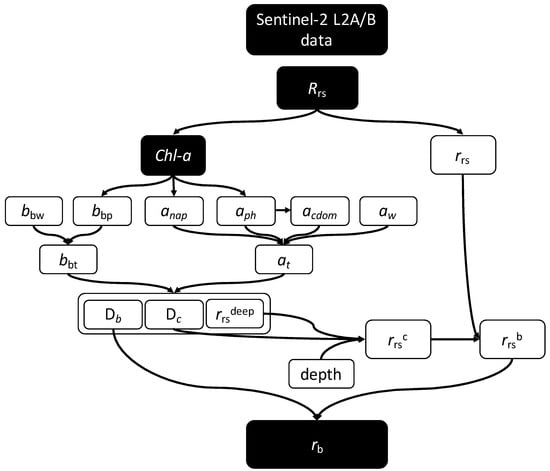
Figure 1
Open AccessArticle
Widespread Coral Bleaching and Mass Mortality of Reef-Building Corals in Southern Mexican Pacific Reefs Due to 2023 El Niño Warming
by
Andrés López-Pérez, Rebeca Granja-Fernández, Eduardo Ramírez-Chávez, Omar Valencia-Méndez, Fabián A. Rodríguez-Zaragoza, Tania González-Mendoza and Armando Martínez-Castro
Oceans 2024, 5(2), 196-209; https://doi.org/10.3390/oceans5020012 - 04 Apr 2024
Abstract
In May 2023, oceanic and atmospheric anomalies indicated El Niño conditions in the eastern Pacific, followed by coral bleaching in coral communities and reefs of Huatulco. We conducted surveys and sampled coral reef communities from late June to mid–August of 2023 to evaluate
[...] Read more.
In May 2023, oceanic and atmospheric anomalies indicated El Niño conditions in the eastern Pacific, followed by coral bleaching in coral communities and reefs of Huatulco. We conducted surveys and sampled coral reef communities from late June to mid–August of 2023 to evaluate the intensity and extent of the changes associated with the warming event. From January of 2023, Huatulco experienced positive sea surface temperature (SST) anomalies; however, beginning in June, the high-temperature anomalies became extreme (>31 °C; ~2 °C above historical records). These high temperatures resulted in extensive coral bleaching in middle–late June and mortality from middle–late July (>50–93%). In addition, the area experienced significant reductions in echinoderm abundance and fish biomass. In 2023, severe bleaching affected coral systems in the Central Mexican Pacific, Gulf of Mexico, and Mexican Caribbean, making this the most devastating marine heatwave event, simultaneously impacting coral reefs across Mexico’s Pacific and Atlantic coasts.
Full article
(This article belongs to the Special Issue Coral Reef Ecology and Biology)
►▼
Show Figures

Figure 1
Open AccessArticle
The Effects of Tetrabromobisphenol A (TBBPA) on the Mussel Mytilus galloprovincialis: A Multi-Biomarker Approach
by
Sandra Copeto, Sara Ganço, Inês João Ferreira, Marco Silva, Carla Motta and Mário Diniz
Oceans 2024, 5(2), 181-195; https://doi.org/10.3390/oceans5020011 - 03 Apr 2024
Abstract
►▼
Show Figures
Tetrabromobisphenol A (TBBPA) is a fire-retardant containing bromine, produced in large quantities worldwide and extensively used in several industrial products. This compound was identified as a potential contaminant of the environment, causing toxicity to organisms. However, its toxicity remains poorly understood in marine
[...] Read more.
Tetrabromobisphenol A (TBBPA) is a fire-retardant containing bromine, produced in large quantities worldwide and extensively used in several industrial products. This compound was identified as a potential contaminant of the environment, causing toxicity to organisms. However, its toxicity remains poorly understood in marine bivalves. The first objective of this work was to evaluate the impact of TBBPA on mussels (Mytilus galloprovincialis) exposed for 28 days to various concentrations of TBBPA (0, 1, 10, and 100 µg·L−1), by assessing stress biomarkers’ responses (Glutathione S-transferase, superoxide dismutase, catalase, lipid peroxidation, total antioxidant capacity, total ubiquitin, caspase-3 and acetylcholinesterase). The results showed that lower concentrations (1 and 10 µg·L−1) were efficiently detoxified, as suggested by GST activities, which were supported by the responses of the other biomarkers. The most pronounced effects were observed in animals exposed to the highest concentration of TBBPA (100 µg·L−1), suggesting oxidative stress. Additionally, significant strong correlations were found between total antioxidant capacity and some biomarkers (superoxide dismutase and lipid peroxidation), showing that processes involved in oxidative stress fighting are working to avoid cell injury. In brief, mussels’ defense mechanisms were capable of dealing with exposure to the lower concentrations tested. Despite this, the risk of consuming shellfish or other fishery products contaminated with TBBPA should be a cause for concern.
Full article
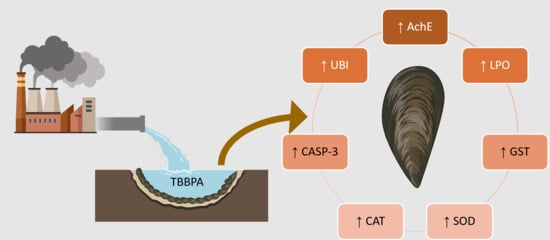
Graphical abstract
Open AccessFeature PaperArticle
Investigation of Spatiotemporal Patterns of Harbour Porpoise (Phocoena phocoena) Strandings in Swedish Waters for Improved Monitoring and Management
by
Vigge Ulfsson, Hyeyoung Kim, Linnea Cervin, Anna Roos and Aleksija Neimanis
Oceans 2024, 5(2), 166-180; https://doi.org/10.3390/oceans5020010 - 29 Mar 2024
Abstract
Harbour porpoises (Phocoena phocoena) are the only cetacean residents found year-round in Swedish waters and they are exposed to numerous natural and anthropogenic threats. Since the in situ monitoring of cetaceans can be difficult, invasive and often expensive, investigation of stranding patterns
[...] Read more.
Harbour porpoises (Phocoena phocoena) are the only cetacean residents found year-round in Swedish waters and they are exposed to numerous natural and anthropogenic threats. Since the in situ monitoring of cetaceans can be difficult, invasive and often expensive, investigation of stranding patterns and examination of stranded animals can be used as a cost-effective source of data to study these elusive animals. The aim of this study was to investigate the spatiotemporal patterns of harbour porpoise stranding reports and the possible underlying causes in Swedish waters over a ten-year period (2014–2023). Additionally, the Swedish stranding network plays a key role in the collection of stranded carcasses for health and disease surveillance, and geographic coverage of the network also was analysed. When making spatial comparisons, the ten-year period was divided into two five-year blocks. Data on 854 stranded harbour porpoises were analysed from the coasts of the Skagerrak, Kattegat, and Baltic Seas. Both significant spatial and temporal patterns could be identified. Strandings peaked in July through September and hotspots occurred along most of the Swedish west coast, with the most frequent hotspots located around Öresund and especially the area around the Kullen peninsula. The spatial patterns of strandings found in this study are consistent with data on porpoise abundance, prey abundance, and gillnet fisheries’ efforts. The latter is known to be one of the primary causes of porpoise mortality. Furthermore, the coverage of the Swedish stranding network increased between the two periods, likely reflecting an increased awareness of the carcass-based surveillance program, and gaps requiring network expansion efforts were identified. These results also provide baseline data to enable the continued monitoring of stranding trends, as changes may indicate changes in population distribution, size or mortality rates.
Full article
(This article belongs to the Special Issue Marine Mammals in a Changing World, 2nd Edition)
►▼
Show Figures
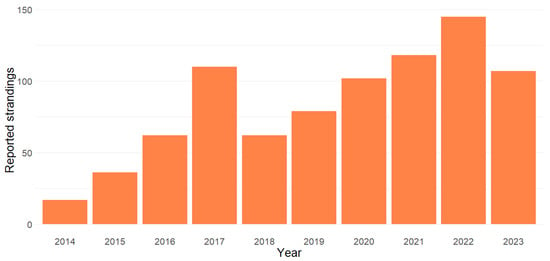
Figure 1
Open AccessArticle
Effects of Food Concentration and Light Intensity on the Growth of a Model Coral
by
Tung-Yung Fan, Yan-Leng Huang and Anderson Mayfield
Oceans 2024, 5(2), 150-165; https://doi.org/10.3390/oceans5020009 - 25 Mar 2024
Abstract
Since reef-building corals rely on both heterotrophy and endosymbiotic dinoflagellate autotrophy to meet their metabolic needs, it is necessary to consider both food supply and light levels, respectively, when optimizing their cultivation ex situ. Herein nubbins of the model reef coral Pocillopora
[...] Read more.
Since reef-building corals rely on both heterotrophy and endosymbiotic dinoflagellate autotrophy to meet their metabolic needs, it is necessary to consider both food supply and light levels, respectively, when optimizing their cultivation ex situ. Herein nubbins of the model reef coral Pocillopora acuta cultured in recirculating aquaculture systems at photosynthetically active radiation levels of 370 or 670 μmol quanta m−2 s−1 were fed Artemia nauplii at concentrations of either 33 or 78 individuals mL−1 in a separate feeding tank for 6 hr in the dark thrice weekly. A subset of nubbins was experimentally wounded at the outset of the 84-day experiment to assess recovery, and 100% fully healed within 2–4 weeks. All cultured corals survived, and unwounded corals (1) grew at a specific growth rate approaching 0.5% day−1 and (2) demonstrated a mean total linear extension of 0.2% day−1 (~6–8 cm year−1); these are far higher than growth rates normally documented in situ. In the feeding tank, corals tolerated nitrate levels up to 25 mg L−1, but once concentrations reached 50 mg L−1 by day 84, tissue necrosis began to occur in nubbins of one tank. This highlights the importance of feeding in separate tanks during long-term culture of corals, and bio-filtration could reduce the possibility of organic matter accumulation in future coral culture studies.
Full article
(This article belongs to the Special Issue Coral Reef Ecology and Biology)
►▼
Show Figures
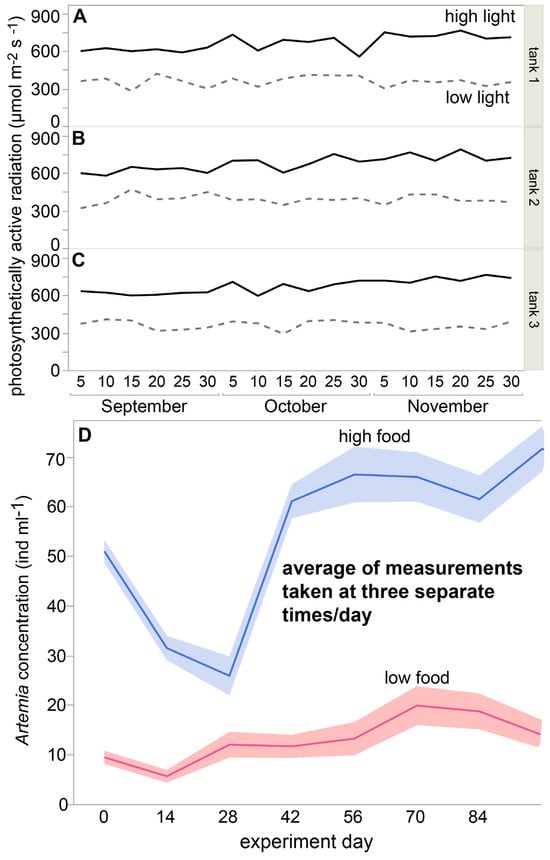
Figure 1
Open AccessArticle
Field Test of an Autonomous Observing System Prototype for Measuring Oceanographic Parameters from Ships
by
Fernando P. Santos, Teresa L. Rosa, Miguel A. Hinostroza, Roberto Vettor, A. Miguel Piecho-Santos and C. Guedes Soares
Oceans 2024, 5(1), 127-149; https://doi.org/10.3390/oceans5010008 - 14 Mar 2024
Abstract
►▼
Show Figures
A prototype of an autonomous system for the retrieval of oceanographic, wave, and meteorologic data was installed and tested in May 2021 on a Portuguese research vessel navigating on the Atlantic Ocean. The system was designed to be installed in fishing vessels that
[...] Read more.
A prototype of an autonomous system for the retrieval of oceanographic, wave, and meteorologic data was installed and tested in May 2021 on a Portuguese research vessel navigating on the Atlantic Ocean. The system was designed to be installed in fishing vessels that could operate as a distributed network of ocean data collection. It consists of an automatic weather station, a ferrybox with a water pumping system, an inertial measurement unit, a GNSS unit, an onboard desktop computer, and a wave estimator algorithm for wave spectra estimation. Among several parameters collected by this system’s sensors are the air temperature, barometric pressure, humidity, wind speed and direction, sea water temperature, pH, dissolved oxygen, salinity, chlorophyll-a, roll, pitch, heave, true heading, and geolocation of the ship. This paper’s objectives are the following: (1) describe the autonomous prototype; and (2) present the data obtained during a full-scale trial; (3) discuss the results, advantages, and limitations of the system and future developments. Meteorologic measurements were validated by a second weather station onboard. The estimated wave parameters and wave spectra showed good agreement with forecasted data from the Copernicus database. The results are promising, and the system can be a cost-effective solution for voluntary observing ships.
Full article
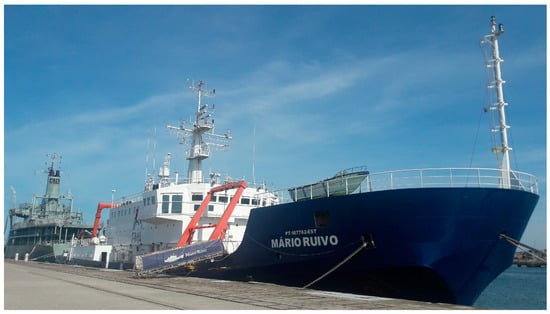
Figure 1
Open AccessFeature PaperArticle
Continuous Zonal Gradients Characterize Epipelagic Plankton Assemblages and Hydrography in the Subtropical North Atlantic
by
Antonio Bode, María Ángeles Louro, Elena Rey and Angel F. Lamas
Oceans 2024, 5(1), 109-126; https://doi.org/10.3390/oceans5010007 - 01 Mar 2024
Abstract
►▼
Show Figures
The subtropical North Atlantic is a key region for understanding climate impact in the ocean. Plankton studies in this region have been generally framed in biogeographic provinces or focused on latitudinal gradients. In this study, we demonstrate the benefits of using empirically constructed
[...] Read more.
The subtropical North Atlantic is a key region for understanding climate impact in the ocean. Plankton studies in this region have been generally framed in biogeographic provinces or focused on latitudinal gradients. In this study, we demonstrate the benefits of using empirically constructed continuous gradients versus the use of average values for biogeographical provinces to characterize plankton assemblages along a longitudinal transect at 24.5° N using an unprecedented array of stations including hydrographic observations, abundance of phytoplankton and zooplankton, and plankton size spectra in the epipelagic layer (0–200 m). In addition, the variability of zooplankton assemblages was analyzed using detailed taxonomic identification at selected stations. We found significant gradients in most hydrographic and plankton variables. The former, including surface temperature and salinity, the depth of the upper mixing layer, and the depth of the chlorophyll maximum, displayed non-linear gradients with maximum or minimum values near the center of the transect. In contrast, most plankton variables showed linear zonal gradients. Phytoplankton, microzooplankton (<100 µm), and the slope and the intercept of the size spectra increased (and Trichodesmium decreased) to the west. Total mesozooplankton (>200 µm) did not show any significant zonal pattern, but the taxonomic assemblages were characterized by a gradual replacement of large Calanoids by small-bodied Cyclopoid copepods from east to west. The use of continuous gradients provides more detailed information on the zonal structure of subtropical plankton than the classical approach using discrete areas.
Full article
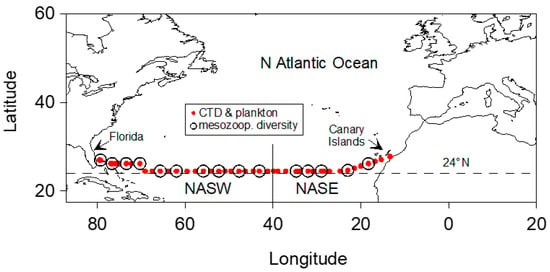
Figure 1
Open AccessReview
Blueprint for Blue Carbon: Lessons from Seychelles for Small Island States
by
Michael Bennett, Antaya March, Jeremy Raguain and Pierre Failler
Oceans 2024, 5(1), 81-108; https://doi.org/10.3390/oceans5010006 - 21 Feb 2024
Abstract
Blue carbon has been proposed as a nature-based solution for climate change mitigation; however, a limited number of published works and data and knowledge gaps hinder the development of small island developing states’ (SIDS) national blue carbon resources globally. This paper reviews the
[...] Read more.
Blue carbon has been proposed as a nature-based solution for climate change mitigation; however, a limited number of published works and data and knowledge gaps hinder the development of small island developing states’ (SIDS) national blue carbon resources globally. This paper reviews the blue carbon ecosystems of Seychelles as a case study in the context of SIDS, comparing estimations by the Blue Carbon Lab and recent blue carbon (mangrove and seagrass) evaluations submitted to the Seychelles national government. Mangroves (2195 ha, 80% in Aldabra Atoll) and seagrasses (142,065 ha) dominate in Seychelles, with coral reefs having the potential for carbon sequestration (169,000 ha). Seychelles is on track to protecting its blue carbon, but these systems are threatened by rising sea levels, coastal squeeze, erosion, severe storms, and human activities. The importance of carbon inventories, accounting institutions, and continuous monitoring of blue carbon systems is discussed. Blue accounting is necessary for accurate accounting of carbon sequestration and carbon storage, generating carbon credits, and representing impactful reductions in greenhouse gases for NDCs. Challenges and opportunities include policy legislation regarding ownership rights, accreditation and certification for carbon credits, sustainable financing mechanisms like natural asset companies and blue tokens, local engagement for long-term success, and carbon market dynamics following COP27. The restoration and regulation of blue carbon resources for optimal ecosystem services delivery, carbon inventories, and blue carbon policy are recommended development priorities. Blue carbon ecosystems have the potential to contribute to NDCs of SIDS while simultaneously offering sustainable development pathways for local communities through the multiple ecosystem services they provide.
Full article
Open AccessArticle
Artificial Reef Deployment Reduces Diving Pressure from Natural Reefs—The Case of Introductory Dives in Eilat, Red Sea
by
Nadav Shashar, Asa Oren, Re’em Neri, Omer Waizman, Natalie Chernihovsky and Jenny Tynyakov
Oceans 2024, 5(1), 71-80; https://doi.org/10.3390/oceans5010005 - 07 Feb 2024
Abstract
Artificial reefs have been suggested as alternative dive sites to mitigate human pressure on natural reefs. Despite the conceptual appeal of artificial reefs, there is a paucity of empirical evidence regarding their effectiveness in achieving this objective. Here, we report that a small
[...] Read more.
Artificial reefs have been suggested as alternative dive sites to mitigate human pressure on natural reefs. Despite the conceptual appeal of artificial reefs, there is a paucity of empirical evidence regarding their effectiveness in achieving this objective. Here, we report that a small artificial reef deployed adjacent to a local coral marine protected area caused a shift in the routes taken by introductory dives and nearly eliminated their visitations to the natural fringing reef within the MPA. This behavioral shift among divers persisted for more than a decade following the AR deployment. These findings underscore the efficacy of well-designed and appropriately located artificial reefs as valuable instruments in the conservation of coral reefs.
Full article
(This article belongs to the Topic Conservation and Management of Marine Ecosystems)
►▼
Show Figures
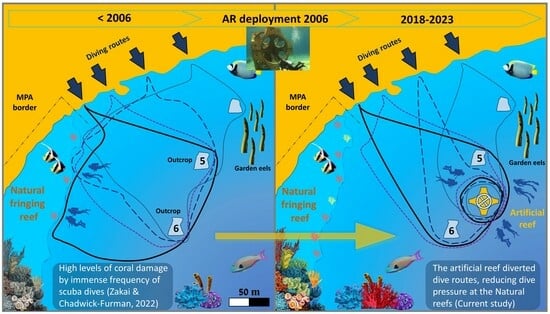
Graphical abstract
Open AccessFeature PaperArticle
Baleen–Plastic Interactions Reveal High Risk to All Filter-Feeding Whales from Clogging, Ingestion, and Entanglement
by
Alexander J. Werth, Shirel R. Kahane-Rapport, Jean Potvin, Jeremy A. Goldbogen and Matthew S. Savoca
Oceans 2024, 5(1), 48-70; https://doi.org/10.3390/oceans5010004 - 01 Feb 2024
Cited by 1
Abstract
Baleen whales are ecosystem sentinels of microplastic pollution. Research indicates that they likely ingest millions of anthropogenic microparticles per day when feeding. Their immense prey consumption and filter-feeding behavior put them at risk. However, the role of baleen, the oral filtering structure of
[...] Read more.
Baleen whales are ecosystem sentinels of microplastic pollution. Research indicates that they likely ingest millions of anthropogenic microparticles per day when feeding. Their immense prey consumption and filter-feeding behavior put them at risk. However, the role of baleen, the oral filtering structure of mysticete whales, in this process has not been adequately addressed. Using actual baleen tissue from four whale species (fin, humpback, minke, and North Atlantic right) in flow tank experiments, we tested the capture rate of plastics of varying size, shape, and polymer type, as well as chemical residues leached by degraded plastics, all of which accumulated in the baleen filter. Expanded polystyrene foam was the most readily captured type of plastic, followed by fragments, fibers, nurdles, and spherical microbeads. Nurdle and microbead pellets were captured most readily by right whale baleen, and fragments were captured by humpback baleen. Although not all differences between polymer types were statistically significant, buoyant polymers were most often trapped by baleen. Plastics were captured by baleen sections from all regions of a full baleen rack, but were more readily captured by baleen from dorsal and posterior regions. Baleen–plastic interactions underlie various risks to whales, including filter clogging and damage, which may impede feeding. We posit that plastics pose a higher risk to some whale species due to a combination of factors, including filter porosity, diet, habitat and geographic distribution, and foraging ecology and behavior. Certain whale species in specific marine regions are of the greatest concern due to plastic abundance. It is not feasible to remove all plastic from the sea; most of what is there will continue to break into ever-smaller pieces. We suggest that higher priorities be accorded to lessening humans’ dependence on plastics, restricting entry points of plastics into the ocean, and developing biodegradable alternatives.
Full article
(This article belongs to the Special Issue Marine Mammals in a Changing World, 2nd Edition)
►▼
Show Figures

Figure 1
Open AccessArticle
Effects of Water Temperature and Structural Habitat Complexity on the Routine Swimming Speed and Escape Response of Post-Settlement Stage White Seabream
by
Patrícia Vicente, João Almeida, Laura Ribeiro, Sara Castanho, Ana Candeias-Mendes, Pedro Pousão-Ferreira and Ana Margarida Faria
Oceans 2024, 5(1), 38-47; https://doi.org/10.3390/oceans5010003 - 12 Jan 2024
Abstract
►▼
Show Figures
Coastal habitats are increasingly threatened by multiple anthropogenic-related activities, which include ocean warming and loss of structural habitat complexity. These two pressures have the potential to severely affect the structure and function of marine biodiversity. Early life stages of many fish species recruit
[...] Read more.
Coastal habitats are increasingly threatened by multiple anthropogenic-related activities, which include ocean warming and loss of structural habitat complexity. These two pressures have the potential to severely affect the structure and function of marine biodiversity. Early life stages of many fish species recruit to coastal habitats at the end of their pelagic phase, benefiting from access to food, shelter and protection. However, changes in temperature have been shown to influence ecologically relevant behaviours in post-settlement stage fish, and the loss of structural habitat complexity has been related to low recruitment and deleterious behaviours of fish in coastal habitats. Here, we evaluated the individual and interactive effects of prolonged exposure to increasing temperature and changed structural habitat complexity on routine swimming speed and escape response of post-settlement white seabream, Diplodus sargus (Linnaeus, 1758). Fish were reared under different temperatures (control 19 °C; high 22 °C) and structural habitat complexity (low and high) scenarios, in a cross-experimental design, and the routine swimming and escape responses were analyzed after 6 weeks of exposure. Change in temperature did not induce alterations at the behavioural level, but loss of structural habitat complexity increased speed and distance travelled during routine swimming, and responsiveness to a stimulus during the escape response behaviour. The interaction of the two factors did not influence performance. Determining how species are affected by changes in their environment, and the mechanisms that underlie these changes, will be critical to understanding the fish recruitment and populations’ fitness and survival.
Full article

Figure 1
Open AccessArticle
Herbivorous Reef Fish Interaction with the Habitat and Physicochemical Variables in Coral Ecosystems in the Mexican Tropical Pacific
by
Diana Morales-de-Anda, Amílcar Leví Cupul-Magaña, Consuelo María Aguilar-Betancourt, Gaspar González-Sansón, Fabián Alejandro Rodríguez-Zaragoza and Alma Paola Rodríguez-Troncoso
Oceans 2024, 5(1), 21-37; https://doi.org/10.3390/oceans5010002 - 04 Jan 2024
Abstract
Herbivorous fish can mediate spatial competition between algae and corals, which is crucial for coral ecosystems. However, in areas with limited coral coverage like the Mexican tropical Pacific (MTP), this dynamic is not fully understood. This study, using a functional trait approach and
[...] Read more.
Herbivorous fish can mediate spatial competition between algae and corals, which is crucial for coral ecosystems. However, in areas with limited coral coverage like the Mexican tropical Pacific (MTP), this dynamic is not fully understood. This study, using a functional trait approach and ordination analysis, explores whether herbivorous reef fish assemblage influences the benthic habitat components or if physicochemical factors define the habitat variability in the MTP’s Cleofas and Marietas insular systems. We analyzed if this relationship persisted across systems and over time, and identified species traits tied to habitat variability. Island comparison analyses between Cleofas and Marietas reveal that both herbivorous reef fish and physicochemical variables shape the habitat. Cleofas had larger mobile herbivorous fish that formed groups related mostly to macroalgae cover. In contrast, temporal analysis of Marietas shows that the habitat is primarily shaped by physicochemical variables with herbivorous fish being mainly small farmer species related to branching corals. Notably, these closely situated insular systems present varied ecosystem mediators, influenced by diverse drivers including fish traits and environmental factors. This study underscores the potential of employing a framework of ecological species traits combined with ordination methods to unravel the distinct site dynamics that contribute to the persistence of coral ecosystems within the MTP.
Full article
(This article belongs to the Special Issue Coral Reef Ecology and Biology)
►▼
Show Figures
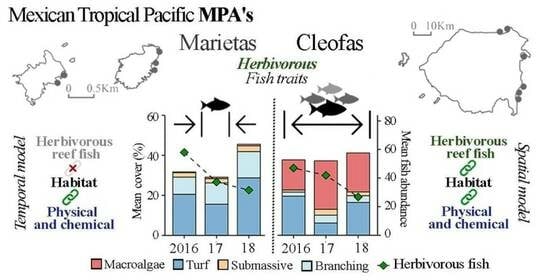
Graphical abstract
Open AccessArticle
Contribution to the Knowledge of Cetacean Strandings in Chile between 2015 and 2020
by
Mauricio Ulloa, Miguel A. Rivero and Antonio Fernández
Oceans 2024, 5(1), 1-20; https://doi.org/10.3390/oceans5010001 - 03 Jan 2024
Abstract
Strandings caused by anthropogenic factors are one of the most worrying threats in relation to the conservation of cetacean species, and in the case of Chile, due to its geography and large extension of the coastline, monitoring and access to these events is
[...] Read more.
Strandings caused by anthropogenic factors are one of the most worrying threats in relation to the conservation of cetacean species, and in the case of Chile, due to its geography and large extension of the coastline, monitoring and access to these events is difficult, making their study more complex. Chile has a shortage of specialized scientific forensic research facilities for cetaceans; however, for this study, it was able to collect data recorded from official institutions and sporadic scientific biological sampling oriented to investigate the causes of death or stranding. According to the Chilean government official database, we described that the main causes of unusual mortality events (UME) and mass strandings from 2015 and 2016 were acute poisoning by biotoxins and strandings by multiple possible causes, respectively, while individual strandings would have their causes in anthropogenic activities, such as entanglements in fishing and aquaculture gears and collisions with vessels. The predominant species in mass strandings was the sei whale (Balaenoptera borealis). The geographical area of greatest prominence in mass strandings was the Aysén Region in the Central Patagonia of Chile, while the species mostly involved in individual strandings along the south-central, central, and northern coasts of Chile was the small porpoise (Phocoena spinipinnis). The most common gross pathological findings were advance decay of the carcasses and non-specific wounds of different natures.
Full article
(This article belongs to the Special Issue Marine Mammal Health)
►▼
Show Figures
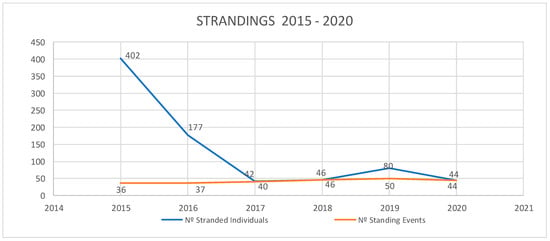
Figure 1
Open AccessArticle
Preliminary Studies on Site Fidelity, Residence Index, and Population Size of Irrawaddy Dolphins in West Penang, Malaysia
by
Nurul Filzati Ali and Leela Rajamani
Oceans 2023, 4(4), 423-439; https://doi.org/10.3390/oceans4040029 - 12 Dec 2023
Abstract
The Irrawaddy dolphin is found in the coastal and estuarine areas of West Penang, Malaysia. Studies were conducted to estimate the site fidelity, residence index, and population size of Irrawaddy dolphins in West Penang. Photo-identification studies were conducted using boat surveys from 2019
[...] Read more.
The Irrawaddy dolphin is found in the coastal and estuarine areas of West Penang, Malaysia. Studies were conducted to estimate the site fidelity, residence index, and population size of Irrawaddy dolphins in West Penang. Photo-identification studies were conducted using boat surveys from 2019 to 2021. Thirty-nine marked Irrawaddy dolphins were identified, with thirty-six newly identified individuals and three individuals observed in 2013. Resightings of four individuals indicated that they were found north of Sungai Burung and Sungai Pinang in West Penang. The majority of individuals had low sighting rates, ranging from 2.6 to 7.7%, with three individuals having medium sighting rates, the highest being 15.4%. The residence index was 0.01 for all 36 individuals, and the highest value of 0.36 was recorded for one individual. Using open population models and closed models, the population size was determined to be 64 or and 52, respectively. The results suggest that although there is a population present, it is probably open, as the residence index is low. The population size appeared to be stable from 2013 to 2021. This information will inform conservation managers of the best way forward for the conservation of Irrawaddy dolphins in Penang.
Full article
(This article belongs to the Special Issue Marine Mammals in a Changing World, 2nd Edition)
►▼
Show Figures
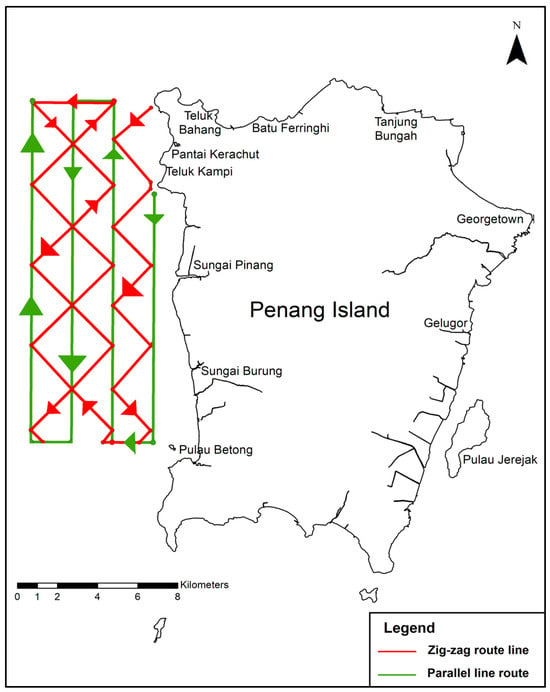
Figure 1
Open AccessArticle
Plastic, It’s What’s for Dinner: A Preliminary Comparison of Ingested Particles in Bottlenose Dolphins and Their Prey
by
Leslie B. Hart, Miranda Dziobak, Randall S. Wells, Elizabeth Berens McCabe, Eric Conger, Tita Curtin, Maggie Knight and John Weinstein
Oceans 2023, 4(4), 409-422; https://doi.org/10.3390/oceans4040028 - 07 Dec 2023
Abstract
Microplastic ingestion was reported for common bottlenose dolphins (Tursiops truncatus) inhabiting Sarasota Bay, FL, USA, a community that also has prevalent exposure to plasticizers (i.e., phthalates) at concentrations higher than human reference populations. Exposure sources are currently unknown, but plastic-contaminated prey
[...] Read more.
Microplastic ingestion was reported for common bottlenose dolphins (Tursiops truncatus) inhabiting Sarasota Bay, FL, USA, a community that also has prevalent exposure to plasticizers (i.e., phthalates) at concentrations higher than human reference populations. Exposure sources are currently unknown, but plastic-contaminated prey could be a vector. To explore the potential for trophic exposure, prey fish muscle and gastrointestinal tract (GIT) tissues and contents were screened for suspected microplastics, and particle properties (e.g., color, shape, surface texture) were compared with those observed in gastric samples from free-ranging dolphins. Twenty-nine fish across four species (hardhead catfish, Ariopsis felis; pigfish, Orthopristis chrysoptera; pinfish, Lagodon rhomboides; and Gulf toadfish, Opsanus beta) were collected from Sarasota Bay during September 2022. Overall, 97% of fish (n = 28) had suspected microplastics, and GIT abundance was higher than muscle. Fish and dolphin samples contained fibers and films; however, foams were common in dolphin samples and not observed in fish. Suspected tire wear particles (TWPs) were not in dolphin samples, but 23.1% and 32.0% of fish muscle and GIT samples, respectively, contained at least one suspected TWP. While some similarities in particles were shared between dolphins and fish, small sample sizes and incongruent findings for foams and TWPs suggest further investigation is warranted to understand trophic transfer potential.
Full article
(This article belongs to the Special Issue Marine Mammals in a Changing World, 2nd Edition)
►▼
Show Figures
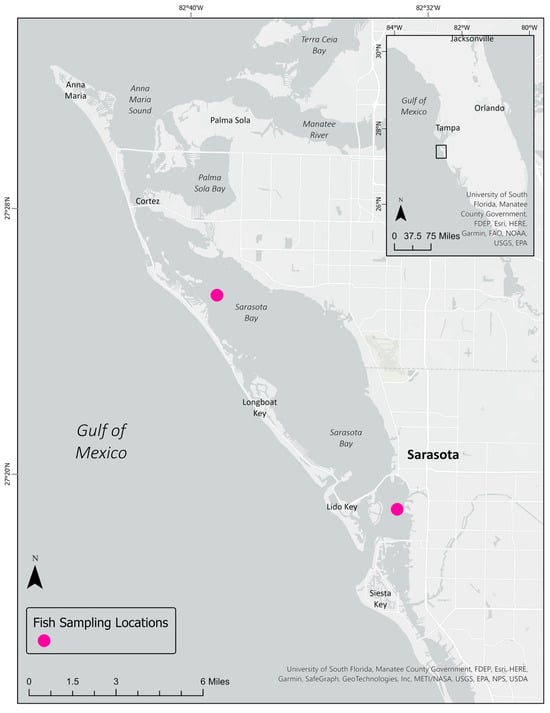
Figure 1
Open AccessArticle
Size Effects on Pumping Rates in High Microbial versus Low Microbial Abundance Marine Sponges
by
Michael P. Lesser
Oceans 2023, 4(4), 394-408; https://doi.org/10.3390/oceans4040027 - 30 Nov 2023
Cited by 1
Abstract
Sponges are increasingly recognized as ecologically important on coral reefs as scleractinian corals decline. Most sponge species can be divided into two symbiotic phenotypes which are characterized as high microbial abundance (HMA) or low microbial abundance (LMA) sponges. Sponge species of HMA or
[...] Read more.
Sponges are increasingly recognized as ecologically important on coral reefs as scleractinian corals decline. Most sponge species can be divided into two symbiotic phenotypes which are characterized as high microbial abundance (HMA) or low microbial abundance (LMA) sponges. Sponge species of HMA or LMA symbiotic phenotypes differ not just in their microbiomes, but in other characteristics, including that LMA sponges actively pump at higher rates than HMA sponges based on a standard normalization to size. This dichotomy has recently been questioned because the size range of LMA sponges used to quantify pumping rates during studies on their trophic ecology were exceedingly small, often less than an order of magnitude. Here, both HMA and LMA sponges, across two to three orders of magnitude in sponge volume (mL) or mass (g) were assessed for allometric relationships between sponge size and pumping rates (Q = mL s−1). The scaling analysis of all data sets combined reveals that HMA sponges scale their pumping rates isometrically with size, while LMA sponges scale their pumping rate allometrically. When HMA species are examined separately, however, tropical HMA sponges scaled isometrically, while temperate HMA sponges scaled allometrically. From an ecological perspective, to quantify differences between HMA and LMA sponges for rate functions of interest (e.g., feeding) it is important to remove the effects of size as a covariate, and adjust the Q values of sponges to a standard volume or mass. For multiple species and geographic locations, this analysis shows that LMA sponges always maintain higher Q values. On tropical coral reefs, the differences between HMA and LMA sponges are intrinsic and constrained by strong evolutionary selection resulting in fixed differences in Q, regardless of sponge size.
Full article
(This article belongs to the Special Issue Coral Reef Ecology and Biology)
►▼
Show Figures
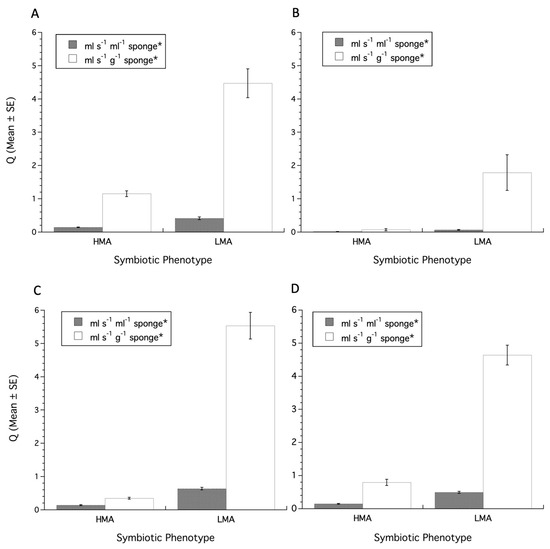
Figure 1
Open AccessArticle
Stability of the Macrocyclic Gd-DOTA Contrast Agent (DOTAREM) under Different Estuarine Environmental Conditions
by
Ana Guerreiro and Pedro Brito
Oceans 2023, 4(4), 381-393; https://doi.org/10.3390/oceans4040026 - 28 Nov 2023
Abstract
►▼
Show Figures
Gadolinium-based contrast agents (GBCA) are complexes, highly stable in vivo, used in magnetic resonance imaging (MRI), administered in patients and then eliminated via the renal system, passing through wastewater treatment plants (WWTP) before being discarded in the receiving medium, without apparent removal. In
[...] Read more.
Gadolinium-based contrast agents (GBCA) are complexes, highly stable in vivo, used in magnetic resonance imaging (MRI), administered in patients and then eliminated via the renal system, passing through wastewater treatment plants (WWTP) before being discarded in the receiving medium, without apparent removal. In this study, it was examined whether different exposure periods to several environmental parameters (solar radiation, different salinities, temperatures and pH) will influence the stability of these complexes, namely, the Gd-DOTA. Gd-DOTA solutions were processed in a seaFAST-pico saline matrix pre-concentration and elimination system, and Gd concentrations were determined using ICP-MS. The results showed that the complex remained stable in fresh, brackish and saline water environments, even when exposed to extreme temperatures (40 °C) or slightly acidic to basic conditions (6–10), for an exposure period of 96 h. A small increase in the free Gd concentration was observed after 18 days when exposed to pH < 4, in all tested salinities (0, 18 and 36 PSU), with a degradation increase of up to 29%, after 5 weeks of exposure in freshwater. When exposed to direct solar radiation, a low Gd-DOTA degradation (4%) was observed after 24 h at salinity 18 PSU and remained constant until the end of the exposure period (96 h), while the remaining salinities showed negligible values.
Full article
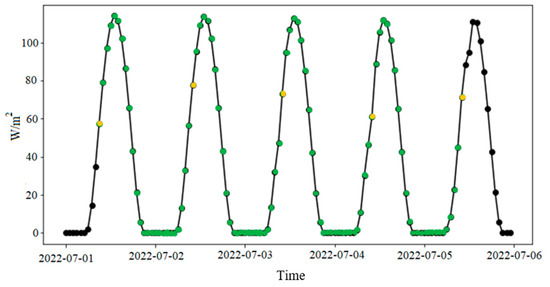
Figure 1
Open AccessReview
Oceanic Environmental Impact in Seaports
by
Nitin Agarwala and Cherdvong Saengsupavanich
Oceans 2023, 4(4), 360-380; https://doi.org/10.3390/oceans4040025 - 26 Nov 2023
Cited by 1
Abstract
Seaports are gateways that connect a nation to the world economy. With trade by sea increasing due to globalization, the need for the improvement and development of seaports cannot be overlooked. While the development of ports is considered essential for the economic growth
[...] Read more.
Seaports are gateways that connect a nation to the world economy. With trade by sea increasing due to globalization, the need for the improvement and development of seaports cannot be overlooked. While the development of ports is considered essential for the economic growth and prosperity of a nation, they also result in environmental deterioration that can hurt the future of humanity. The factors that cause such deterioration are many and have been discussed and studied in some detail over the years. Of these, however, studies associated with the environmental impacts of seaports emanating from the oceanfront are limited. It is with this understanding that the current work discusses the physical and biological impacts that occur due to the oceanic environment in seaports, the existing policy provisions, and the possible ways ahead to reduce environmental deterioration and allow their sustainable operation, by means of reviewing published works.
Full article
(This article belongs to the Topic Aquatic Environment Research for Sustainable Development)
►▼
Show Figures
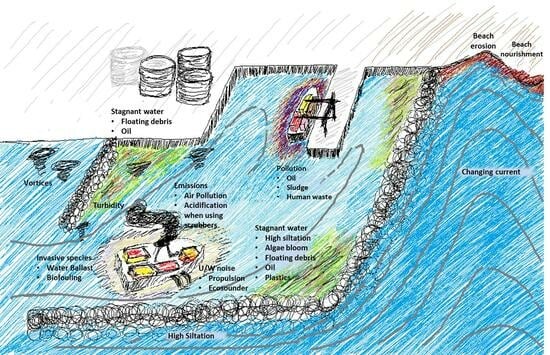
Graphical abstract
Open AccessArticle
Evidence of Sexual Reproduction in Out-Planted Coral Colonies
by
Violeta Martínez-Castillo, Alma Paola Rodríguez-Troncoso and Amílcar Leví Cupul-Magaña
Oceans 2023, 4(4), 350-359; https://doi.org/10.3390/oceans4040024 - 25 Oct 2023
Abstract
Intervention techniques to restore coral communities have become an important management tool to help recover and rehabilitate damaged reefs. The direct transplantation of healthy coral fragments is the most common method; however, there is controversy in the long-term success, as using coral clones
[...] Read more.
Intervention techniques to restore coral communities have become an important management tool to help recover and rehabilitate damaged reefs. The direct transplantation of healthy coral fragments is the most common method; however, there is controversy in the long-term success, as using coral clones may diminish the genetic diversity of the coral population. Genetic recombination can be achieved when the coral colony produces gametes and eventually reproduces; therefore, it is important to provide evidence that restored colonies produce gametes as their naturally recruited counterparts with similar colony size (age). Natural and restored Pocillopora coral colonies of the same size range (between 40 and 50 cm in diameter) were tagged and sampled during the rainy season to determine gamete maturation. Our results show no differences in the reproductive activity among colonies: natural and restored coral colonies matured gametes from June to October, with a peak in sexually active coral colonies in July. Also, gamete malformation was not observed. During the gamete production period, the area’s temperature ranged from 27.9 to 30.02 °C. The results’ evidence that coral colonies formed through active restoration contribute not only to the increase in live coral cover as seen in previous studies but potentially contribute in the medium term (>5 years after out-planting) to the production of larvae and local and subsidiary recruitment, since they exhibit the same reproductive patterns as their naturally formed counterparts and no differences in the reproductive activity among coral colonies. Therefore, long-term coral restoration projects contribute to maintaining the live coral cover and the genetic diversity in the region, eventually rehabilitating the coral community.
Full article
(This article belongs to the Special Issue Coral Reef Ecology and Biology)
►▼
Show Figures

Graphical abstract
Highly Accessed Articles
Latest Books
E-Mail Alert
News
Topics
Topic in
Energies, JMSE, Oceans, Remote Sensing, Water
Energy from Sea Waves
Topic Editors: Daniele Milone, Vincenzo Franzitta, Domenico Curto, Andrea GuercioDeadline: 30 April 2024
Topic in
JMSE, Oceans, Remote Sensing, Sustainability, Water
Aquatic Environment Research for Sustainable Development
Topic Editors: Giacomo De Carolis, Gianfranco Fornaro, Sedat Gündoğdu, Giovanni Ludeno, Matteo Postacchini, Ali Rıza Kosker, Virginia ZamparelliDeadline: 31 July 2024
Topic in
Aquaculture Journal, Fishes, Foods, Nutrients, Oceans
Future Foods from the Sea
Topic Editors: Haohao Wu, Yanbo Wang, Na SunDeadline: 5 September 2024
Topic in
JMSE, Oceans, Remote Sensing, Sustainability, Water
Conservation and Management of Marine Ecosystems
Topic Editors: Monia Renzi, Cristiana Guerranti, Manuela PiccardoDeadline: 31 October 2024

Conferences
Special Issues
Special Issue in
Oceans
Editorial Board Members’ Collection Series—Ocean Variability: Aquatic Time Series
Guest Editors: Michael W. Lomas, Claudia Benitez-NelsonDeadline: 30 April 2024
Special Issue in
Oceans
Floating Microplastics in the World’s Oceans
Guest Editor: Monique MancusoDeadline: 20 August 2024



